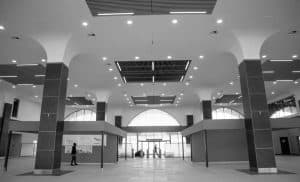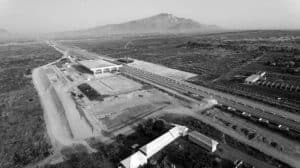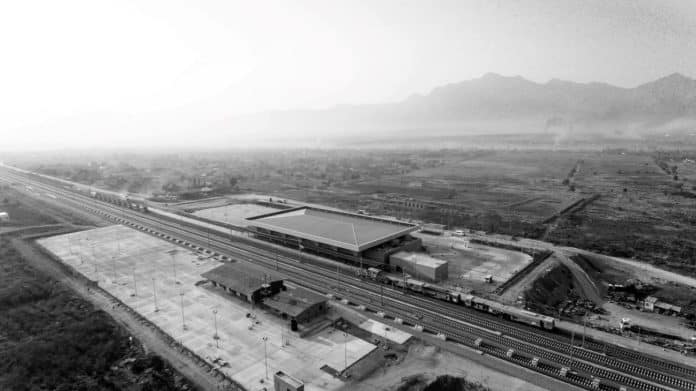Introduction to the Standard Gauge Railway (SGR)
The Standard Gauge Railway (SGR) is a transformative infrastructure project that is reshaping transportation and logistics across East Africa. Designed to provide a faster, more efficient, and environmentally-friendly mode of transportation, the SGR promises to revolutionize the way people and goods move throughout the region.
At the heart of this ambitious initiative lies the town of Morogoro, located in the central region of Tanzania. As the country works to expand its SGR network, Morogoro is poised to play a crucial role as a strategic hub for both passenger and freight transportation.
The importance of a railway hub for passengers and freight
A well-developed railway hub serves as the backbone of a nation’s transportation infrastructure, connecting people, goods, and economic centers. By centralizing key logistics and transportation functions, a hub can significantly improve efficiency, reduce costs, and drive economic growth.
For passengers, a railway hub offers seamless connections, reduced travel times, and enhanced accessibility to various destinations. Commuters and long-distance travelers alike can benefit from the convenience and reliability of a well-integrated hub.
On the freight side, a railway hub streamlines the movement of goods, enabling businesses to optimize their supply chains and reach new markets. The ability to efficiently transfer cargo between different modes of transportation, such as road and rail, is a game-changer for industries and logistics providers.
The potential of Morogoro as a railway hub

Morogoro’s strategic location, existing infrastructure, and planned developments make it an ideal candidate to become a thriving SGR hub. Situated at the intersection of major transportation corridors, Morogoro is poised to serve as a crucial link between the coastal regions and the hinterland.
The town’s existing railway network, including the historic Central Line, provides a solid foundation for the integration of the SGR. Additionally, Morogoro’s proximity to the bustling commercial hub of Dar es Salaam, as well as its proximity to other major cities and agricultural regions, makes it a natural choice for a transportation hub.
Benefits of developing Morogoro as an SGR hub
The transformation of Morogoro into an SGR hub promises to deliver a multitude of benefits for the local and national economies:
- Improved Connectivity: The seamless integration of the SGR with Morogoro’s existing transportation infrastructure will enhance connectivity, reducing travel times and improving access to various destinations.
- Increased Freight Capacity: As a hub, Morogoro will be able to handle a larger volume of freight, enabling businesses to expand their reach and tap into new markets.
- Economic Diversification: The development of the SGR hub will spur investment, create new job opportunities, and foster the growth of ancillary industries, such as logistics, warehousing, and tourism.
- Regional Integration: Morogoro’s position as an SGR hub will strengthen Tanzania’s regional integration, facilitating the movement of people and goods across borders and enhancing trade and economic cooperation.
- Environmental Sustainability: The SGR, with its electric-powered trains and reduced carbon footprint, offers a more sustainable alternative to road transportation, contributing to the country’s environmental goals.
Current infrastructure and transportation challenges in Morogoro
Morogoro currently faces several infrastructure and transportation challenges that hinder its full potential as an SGR hub. The existing railway network is outdated and in need of modernization, with limited capacity and reliability. The road network, while extensive, is often congested and prone to delays, especially during peak hours and the rainy season.
Moreover, the town’s logistics and intermodal facilities require significant upgrades to efficiently handle the anticipated increase in passenger and freight traffic. The lack of dedicated cargo terminals, warehousing, and distribution centers can create bottlenecks and inefficiencies in the supply chain.
The government’s plans and initiatives for the SGR in Morogoro
To address these challenges and unlock Morogoro’s potential as an SGR hub, the Tanzanian government has developed a comprehensive plan of action. Key initiatives include:
- SGR Expansion: The government has committed to extending the SGR network to Morogoro, connecting it to the existing Central Line and the planned extensions to other regions.
- Intermodal Facilities: Plans are underway to construct state-of-the-art intermodal facilities in Morogoro, including dedicated cargo terminals, logistics centers, and warehousing complexes.
- Infrastructure Upgrades: Significant investments will be made to modernize and expand Morogoro’s existing transportation infrastructure, including the rehabilitation of the Central Line and the improvement of the road network.
- Regulatory Reforms: The government is working to streamline the regulatory environment, simplify administrative procedures, and create a more conducive business climate to attract private sector investment in the development of the SGR hub.
- Capacity Building: Initiatives to train and develop the local workforce, enhance technical skills, and promote entrepreneurship will ensure that Morogoro is equipped to manage and operate the SGR hub effectively.
Economic impact and opportunities for local businesses and communities
The transformation of Morogoro into an SGR hub is poised to have a profound economic impact, creating a wealth of opportunities for local businesses and communities.
- Job Creation: The development and operation of the SGR hub will generate a significant number of direct and indirect employment opportunities, ranging from construction and logistics to hospitality and retail.
- Small and Medium Enterprises (SMEs): The influx of economic activity will spur the growth of SMEs, enabling local entrepreneurs to capitalize on the increased demand for goods and services.
- Agricultural Sector: Improved transportation and logistics will benefit the region’s agricultural sector, facilitating the efficient movement of produce to domestic and international markets.
- Tourism: Morogoro’s enhanced connectivity and accessibility will make it an attractive destination for both domestic and international tourists, boosting the local tourism industry.
- Real Estate: The development of the SGR hub will drive investments in residential, commercial, and industrial real estate, creating new opportunities for property owners and developers.
Environmental considerations and sustainability of the SGR in Morogoro

As Morogoro embraces its role as an SGR hub, the government is committed to ensuring that the development is environmentally sustainable and aligned with the country’s broader climate change mitigation efforts.
- Renewable Energy: The SGR network is designed to be powered by renewable energy sources, reducing the carbon footprint and promoting clean transportation.
- Waste Management: Comprehensive waste management systems will be implemented to minimize the environmental impact of the SGR hub’s operations, including the proper disposal and recycling of waste.
- Biodiversity Conservation: The government will work closely with environmental stakeholders to identify and protect sensitive ecological areas, ensuring that the SGR hub’s development does not compromise the region’s biodiversity.
- Urban Planning: The urban planning and development of the SGR hub will incorporate sustainable design principles, such as green spaces, energy-efficient buildings, and multimodal transportation options.
- Community Engagement: Local communities will be actively engaged in the decision-making process to ensure that their concerns and needs are addressed, fostering a sense of ownership and stewardship over the project.
Challenges and potential solutions for the development of Morogoro as an SGR hub
While the potential of Morogoro as an SGR hub is undeniable, the project is not without its challenges. The government and stakeholders will need to address several key issues to ensure the successful development and operation of the hub:
- Financing and Investment: Securing the necessary funding for the infrastructure upgrades, intermodal facilities, and supporting services will be critical to the project’s success.
- Land Acquisition and Resettlement: The acquisition of land for the SGR infrastructure and supporting facilities may pose challenges, requiring careful negotiation and fair compensation for affected communities.
- Capacity Building and Skills Development: Ensuring the availability of a skilled workforce to operate and maintain the SGR hub will be essential, requiring comprehensive training and capacity-building programs.
- Coordination and Stakeholder Engagement: Effective coordination between various government agencies, private sector partners, and local communities will be crucial to address complex issues and ensure a cohesive and inclusive development process.
- Regulatory Harmonization: Aligning the regulatory framework across different sectors and jurisdictions will be necessary to create a seamless and efficient operating environment for the SGR hub.
To address these challenges, the government and stakeholders will need to adopt a collaborative and innovative approach, drawing upon international best practices and leveraging public-private partnerships to mobilize resources and expertise.
Conclusion and future prospects for Morogoro as an SGR hub
Morogoro’s transformation into a thriving SGR hub holds immense promise for Tanzania’s economic and social development. By capitalizing on its strategic location, existing infrastructure, and the government’s ambitious plans, Morogoro is poised to become a vital transportation and logistics center, driving regional integration, facilitating trade, and creating new economic opportunities for local communities.
As the SGR network continues to expand across East Africa, Morogoro’s role as a hub will only grow in importance, solidifying its position as a key driver of Tanzania’s economic growth and prosperity. With a steadfast commitment to sustainability, stakeholder engagement, and innovative solutions, Morogoro’s journey to become an SGR hub will not only unlock the region’s potential but also serve as a model for sustainable transportation development in the continent.
For more articles related to Railway and train travel Tanzania, click here!

































